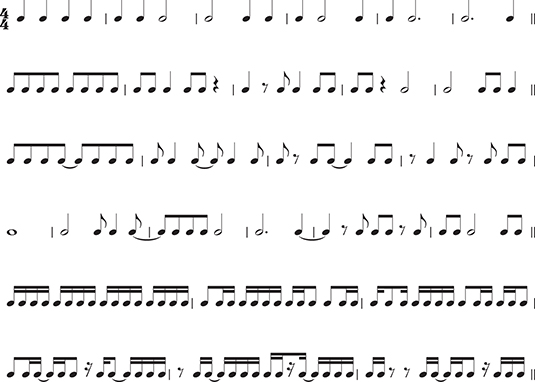When playing a piece on the piano, you sometimes may be tempted to gloss over rhythmic values that look unfamiliar. Rhythmic values basically form the backbone of a piece of music. Ignoring them can have the unfortunate effect of marring an otherwise nice performance. Luckily, you can avoid this problem if you work diligently to gain rhythmic proficiency. There's no better way to do so than to step away from the piano and practice some rhythm drills, clapping or tapping the values.
The following notation depicts some drills in 4/4 time, in progressive levels of difficulty: The first line contains the simplest note values, without rests or ties. By the time you get to the sixth system, or last line, of music, things are a bit more complex, with syncopated 16th notes, not to mention a handful of ties and rests. If you practice examples like this slowly and methodically, you'll be able to play the rhythms precisely when you encounter them in piano literature. For many more drills, check out Basic Rhythmic Training and Rhythmic Training, both by Robert Starer.


